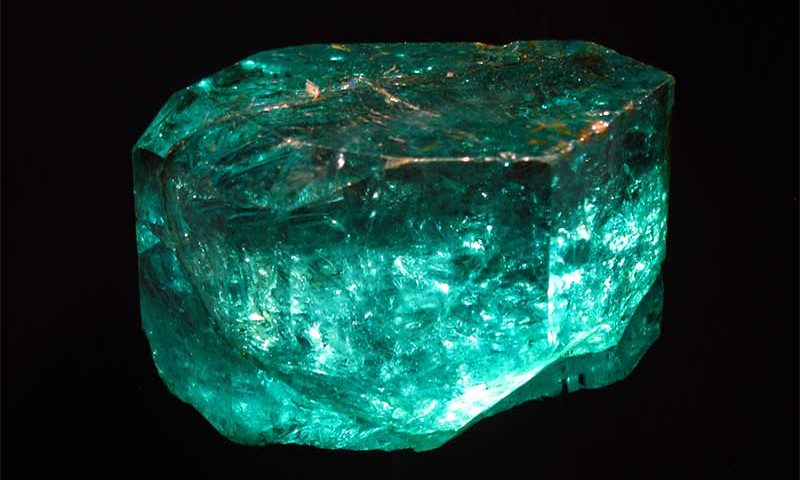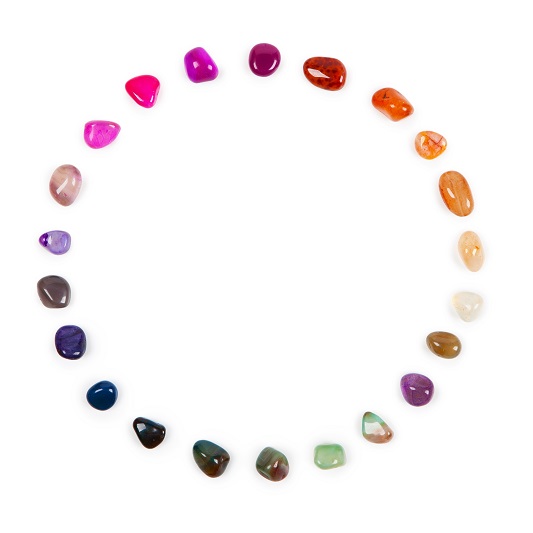Gemstone of the Week: Emerald

Your Complete Guide to Silver
22nd September 2017
10 most expensive watches of all-time
22nd September 2017Seen as being the most famous green gemstone in the world, Emerald is a green variety of Beryl. It’s gorgeous green hue, in addition to its durability and rare occurrence are just a couple of factors that make it one of the most expensive precious gemstones. Coming in a variety of shades of green, the most desired and sought after is a deep green; holding a general rule that the paler the stone is, the lesser its value. Incredibly pale stones are often not referred to as Emeralds at all, but rather as ‘Green Beryl’. As these stones alone do not hold much market value, they are often heat treated, which causes their pale colouring to turn into a deep blue, transforming the stone into Aquamarine.
How to Identify Emerald
The majority of natural emeralds tend to hold distinct characteristic flaws, and almost all are subsequently treated with oil or a type of resin, to fill in any tiny cracks on the surface of the stone. It is the presence of these flaws, or oil in some cases, that enables the naked eye to easily distinguish between a natural emerald and other similar precious stones. When viewed in artificial light, these flaws and fractures become even more apparent.
Small amounts of chromium and vanadium are present in natural emerald, giving the stone it’s green colouring. One of the simplest ways to identify a natural emerald from a fake is to test for specific density and hardness. Much like other forms of beryl, emerald is harder than quartz, feldspar and apatite, but marginally softer than topaz and sapphire. To identify emerald from other forms of beryl, the fragility of the gemstone can be tested, as natural emerald is usually more delicate.
Different Colours and Types of Emerald
Although all emeralds are fairly similar to the uneducated eye, they differ in shine and colour depending on the location they were sourced. The best quality emeralds are believed to be mined in Columbia, boasting vivid colouring and a deep green hue. Although emeralds are found in locations worldwide including Zambia, Zimbabwe, Madagascar and Nigeria, Columbian and Brazilian emeralds are seen as the best quality and hold the highest value. Below, we discuss the characteristics that different types of emeralds hold.
Columbian Emeralds
Mined in Columbia, these emeralds are known for their breathtaking quality and vivid green hue.
Brazilian Emeralds
While Brazilian emeralds are still good quality, they are slightly lighter green in colour, making the stones decrease in value marginally than those mined in Columbia.
Cat’s Eye Emeralds
Boasting an interesting cat’s eye effect, these emeralds feature a wide slit, seen as being similar to the pupil of a cats eye. These type of emeralds are incredibly rare and only found in paler stones.
Trapiche Emeralds
Trapiche emeralds contain little black impurities, forming the appearance of a six-rayed star. This unique type of emerald is found only in the Muzo area of Columbia.
Star Emeralds
Although this term typically refers to Trapiche emeralds, it can sometimes be used to describe asterism, the rare appearance of a star like shape moving inside the emerald.
Where is Emerald Found?
Due to the fact that beryllium only occurs in minuscule quantities in the Earth’s crust, beryl is actually a very rare mineral. Although beryllium itself isn’t particularly rare, it is uncommon for enough of the product to be found in one location to create new minerals. To make matters even harder, the conditions where beryllium is often present, are highly different to those where chromium and vanadium are found; this is why natural emeralds are incredibly rare, and only found in certain locations across the world.
Currently, most of the emerald production comes from Columbia, Zambia, Brazil and Zimbabwe. These four countries produce a reliable commercial quantity of emeralds. While production also occurs in countries such as Madagascar, Nigeria, Afghanistan, Pakistan, Canada and Russia, it is only in minor amounts and often highly irregular.
While the unique conditions for the formation of the green gemstone as rare, emerald is sometimes found within various different rock types. For instance, in Colombia, black shale is thought to house plenty of emerald deposits, with the source of chromium being the shale itself.
Rarely sourced from alluvial deposits, emerald is usually found in a broken stone, that has stayed in one place long enough for the other necessary minerals to come along. Due to its specific gravity, the gemstone does not concentrate with high-density minerals in the stream that are easily sourced from mining.
Healing Properties of Emerald
Commonly used for intuitive awareness and meditation, emerald is thought to help increase one’s spiritual awareness. When used alongside meditation, it can aid the process of rhythmic breathing, which benefits both the body and mind. In some circumstances, the green gemstone is believed to increase psychic awareness, with it being said to ‘grant all knowledge of past, present and future’.
A timeless stone of love and romance, emerald holds a reputation for bringing both passion and unconditional love to both new and old relationships. In addition to bringing domestic bliss in romantic relationships, the stone is thought to bring balance to friendship, too. In one should encounter heartbreak, emerald is thought to lead you back to the right path, helping you to find true love once more.
Emotionally, emerald is said to aid healing of domestic abuse and trauma, as well as dispelling negative energy and bringing the quality of patience to one’s life. While emerald is thought to aid memory of all kinds, the gemstone has the ability to take memories of abuse or trauma and encourage the sufferer to put them into perspective as events of the past. Commonly used in crystal healing, green emerald is believed to ease the guilt and bring hope, forgiveness and compassion to anyone that uses it.
In Summary
Whether you are interested in Emerald as a piece of gemstone jewellery, admiring it for the beautiful deep green hue it boasts, or you’re thinking about using the stone for its healing properties to bring passion and everlasting love to your current relationship, the incredible gemstone boasts so many qualities, making it one that everybody should get their hands on, if possible.




